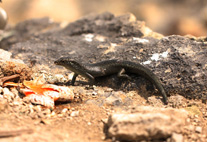Abstract
The present paper contains the complete description of the external morphology of the first juvenile stage of Aegla perobae analysed through light microscopy (LM) and scanning electron microscopy (SEM). Newly-hatched juveniles were obtained from ovigerous females kept under laboratory conditions. Hatching is asynchronous, taking 2–4 days for all juveniles of a single brood to hatch. Average carapace dimensions are 1.54 mm wide and 1.69 mm long (rostrum excluded). Morphology of the carapace, of the cephalothoracic appendages (antennule, antenna, mandible, maxillule, maxilla, maxillipeds, and pereopods), of the pleon, and of the tail fan (telson plus uropods) are described in detail. Aegla perobae juveniles can be readily differentiate from the first juveniles of other aeglids species described so far by the upwardly curved condition of the distal region of the rostrum and the distinct groove along the orbital sinus produced the elevated free in this area. Pleopods 2–5 are present as rudimentary digitiform buds. Rudimentary pleopods are still present in adult males of the species, a trait not yet described in freshwater aeglids. This curious condition is compared and discussed in the light of the current knowledge of early postembryonic developmental patterns found in other anomurans.

